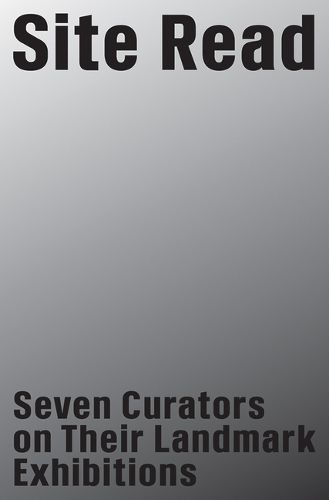Readings Newsletter
Become a Readings Member to make your shopping experience even easier.
Sign in or sign up for free!
You’re not far away from qualifying for FREE standard shipping within Australia
You’ve qualified for FREE standard shipping within Australia
The cart is loading…






The curators and creators of some of the most influential exhibitions in recent decades talk about their history-making shows
In this anthology, seven exhibition makers, including Mary Jane Jacob, Alan W. Moore, Seth Siegelaub, Jennifer Winkworth and others lay out the motivations, conditions, logistics and consequences of shows they organized that now stand as icons of structural innovation in terms of site. These exhibitions treat the museum as a studio (with works realized on-site); appear outside the museum (in the landscape, in domestic spaces, in the street, in the sky); and take the form of publishing or broadcasting (in books, online, on television), dispersing or networking (as mail art, or simultaneous happenings in different cities), or interspersing (interventions in the public sphere).
This book gets at the core of their innovations–how the shows came to be, and what they became–and brings out the story and character of exhibitions that have, in many cases, already been written about extensively, while mitigating hagiography and historicization.
$9.00 standard shipping within Australia
FREE standard shipping within Australia for orders over $100.00
Express & International shipping calculated at checkout
The curators and creators of some of the most influential exhibitions in recent decades talk about their history-making shows
In this anthology, seven exhibition makers, including Mary Jane Jacob, Alan W. Moore, Seth Siegelaub, Jennifer Winkworth and others lay out the motivations, conditions, logistics and consequences of shows they organized that now stand as icons of structural innovation in terms of site. These exhibitions treat the museum as a studio (with works realized on-site); appear outside the museum (in the landscape, in domestic spaces, in the street, in the sky); and take the form of publishing or broadcasting (in books, online, on television), dispersing or networking (as mail art, or simultaneous happenings in different cities), or interspersing (interventions in the public sphere).
This book gets at the core of their innovations–how the shows came to be, and what they became–and brings out the story and character of exhibitions that have, in many cases, already been written about extensively, while mitigating hagiography and historicization.